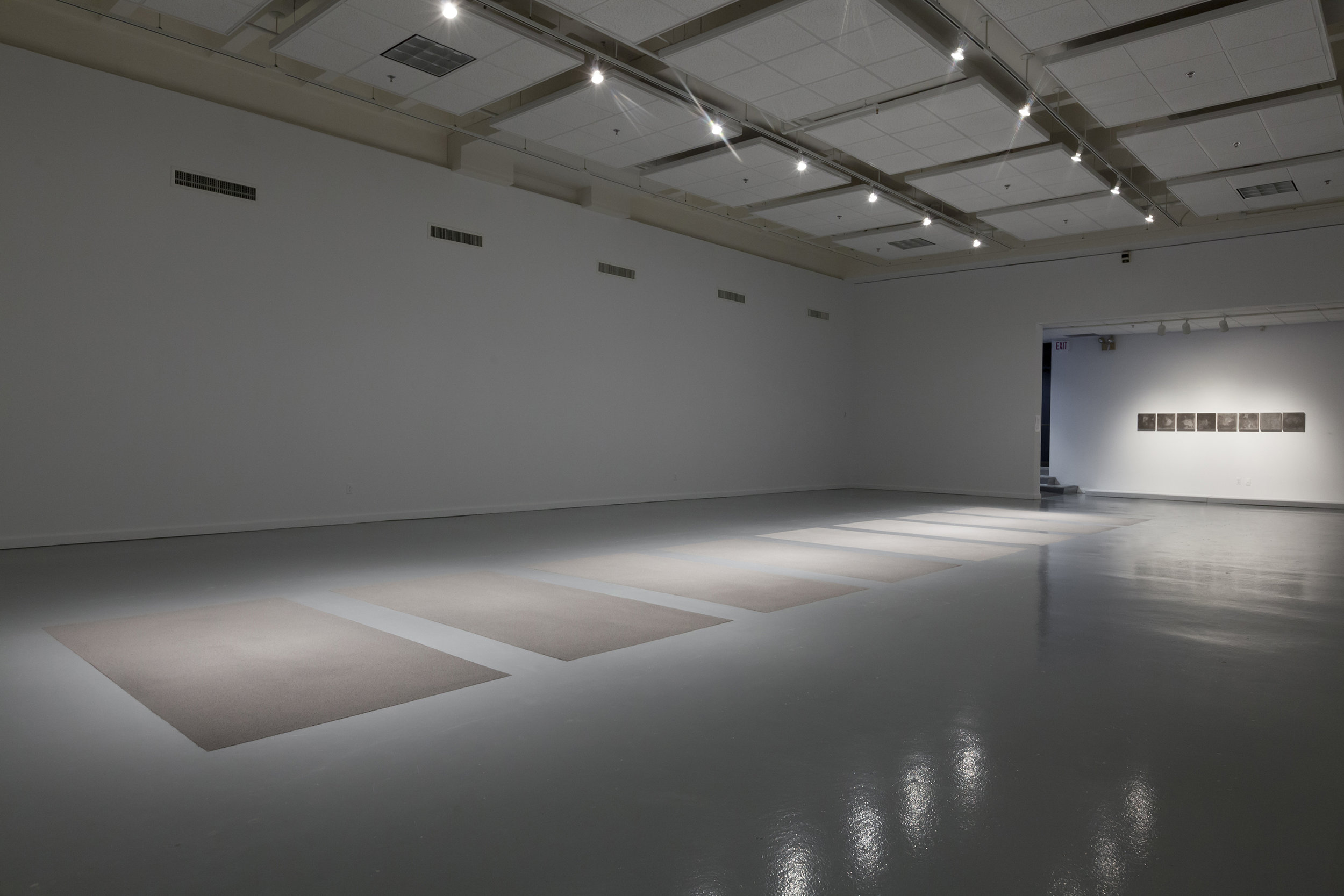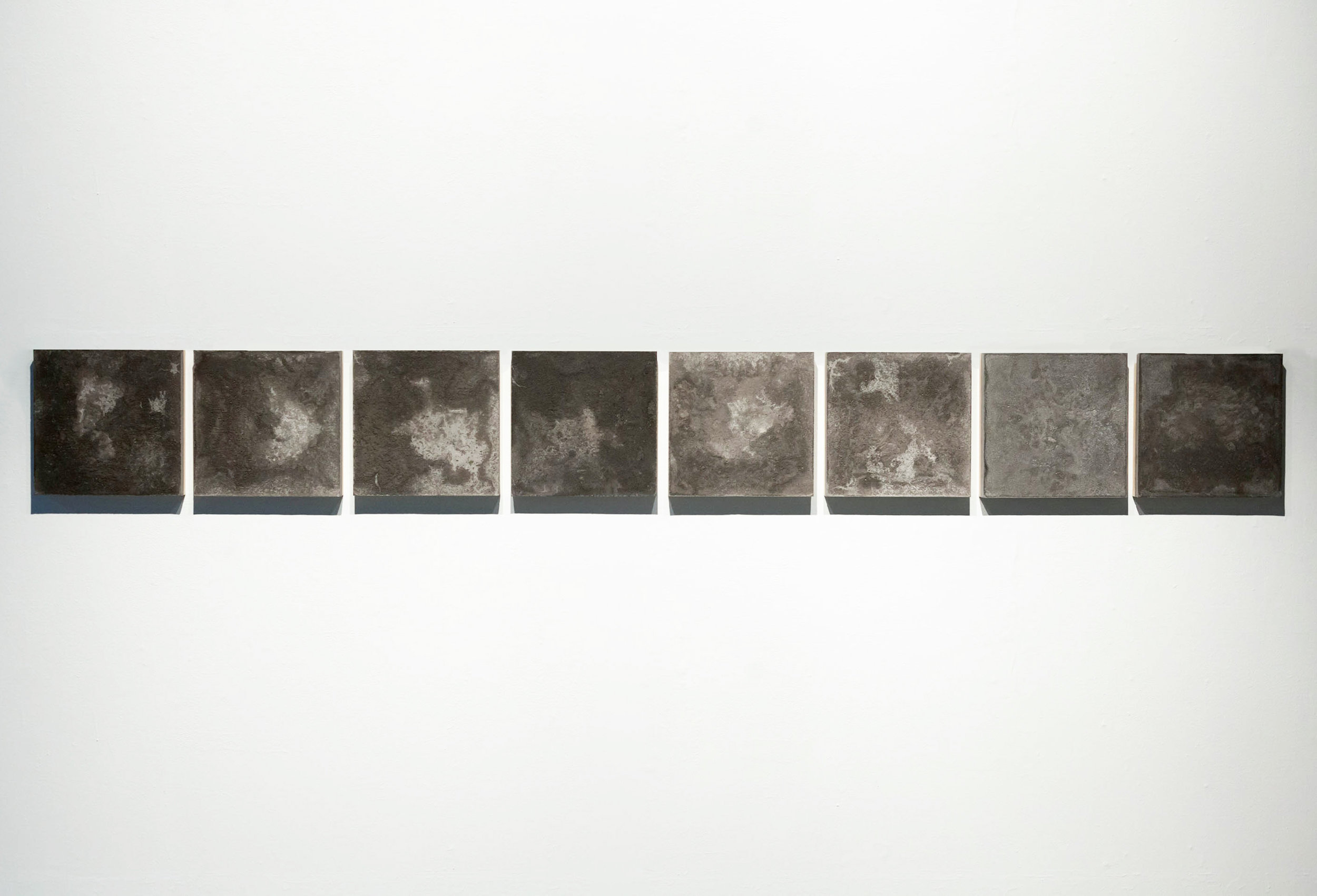The Trace of a Living Document, 2017, is a site-specific installation consisting of eight 4’x8’x1” sifted ash burial plots on the floor, alongside eight 12”x12”x2” ash and gypsum cast panels. The ashes were obtained from burned copies of the Universal Declaration of Human Rights.
In this work, Corral uses ashes to underscore the significance of human rights abuses, corruption, and state-induced violence along the United States-Mexico border. The ashes originate from the Universal Declaration of Human Rights (UDHR), an international agreement adopted by the United Nations General Assembly on December 10, 1948. This foundational eight-page text outlines the basic rights and fundamental freedoms to which all human beings are entitled. Created in response to the devastating horrors of World War II, the UDHR aimed to establish a universal moral standard and foster a new national and international identity, protecting the oppressed from their oppressors.
Particularly rooted in moral uniformity and the championing of democratic freedoms amidst Cold War tensions, the document reflects an unrealistic utopian vision—one where all individuals are safeguarded by international law. Hannah Arendt, in The Origins of Totalitarianism, posits that for the masses, belief is shaped not by fact but by repeated assertions. She states:
“In an ever-changing, incomprehensible world the masses had reached the point where they would, at the same time, believe everything and nothing, think that everything was possible and nothing was true. Mass propaganda discovered that its audience was ready at all times to believe the worst, no matter how absurd, and did not particularly object to being deceived because it held every statement to be a lie anyhow.”
Over seventy years since the UDHR was implemented, its idealistic declarations have been challenged by the realities of international politics and human rights law. Corral’s conception of The Trace of a Living Document emerged from her observations during the 106th private session on Enforced and Involuntary Disappearance cases at the UN, where she witnessed the court proceedings firsthand.
—Text by Emily Butts, Director of Pitzer College Art Galleries

